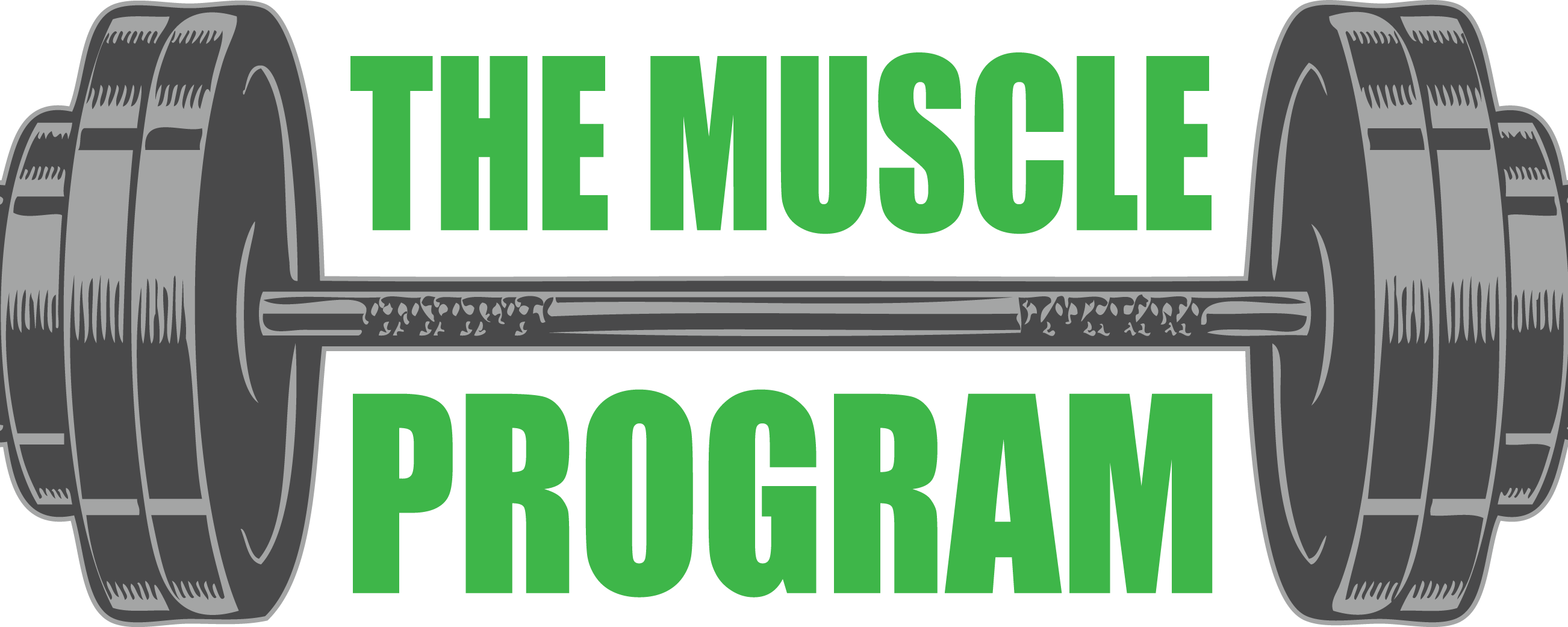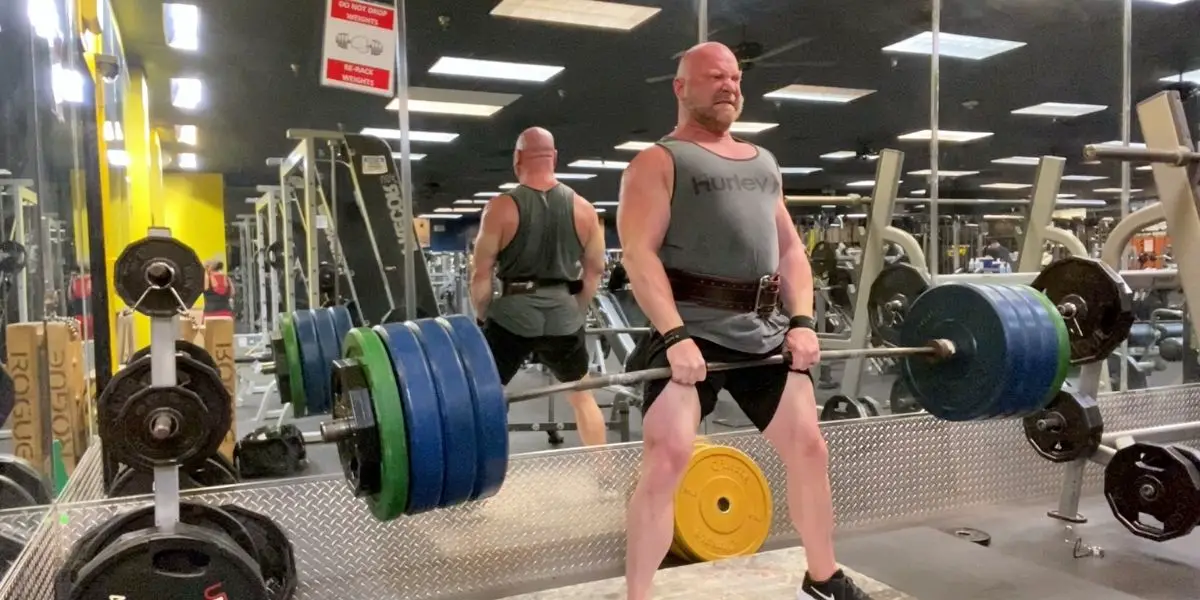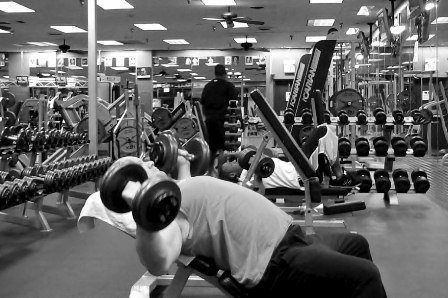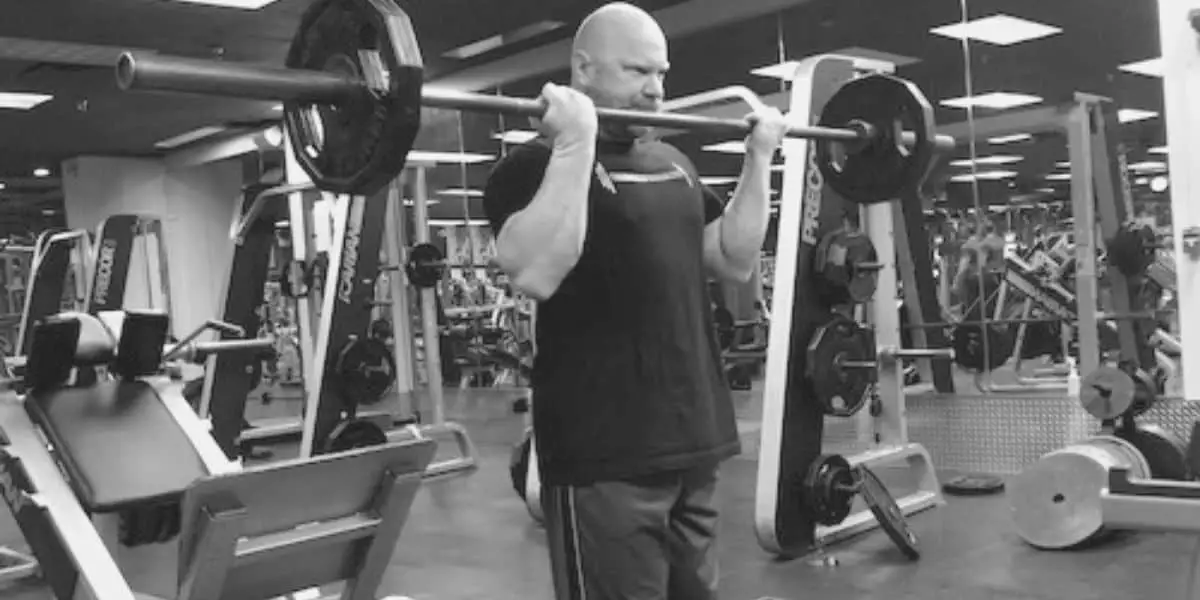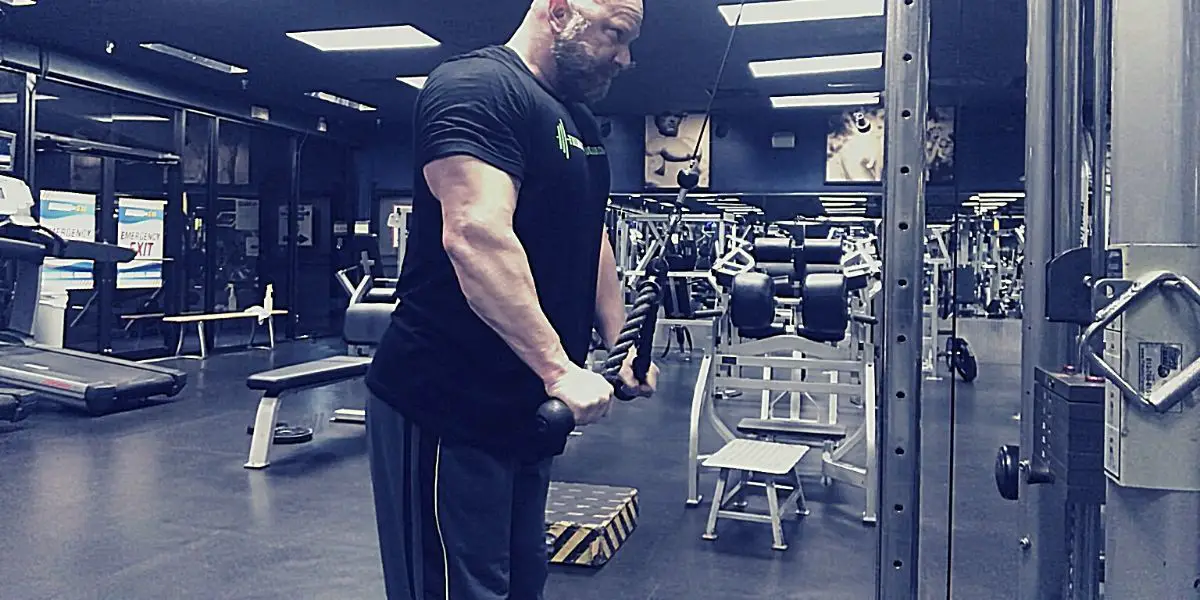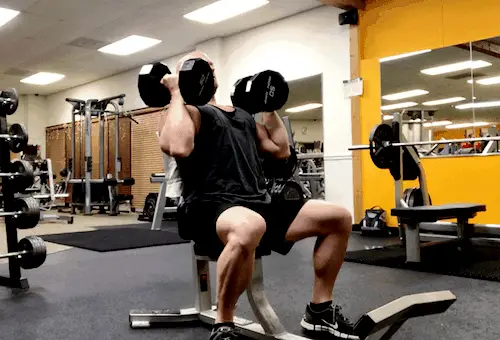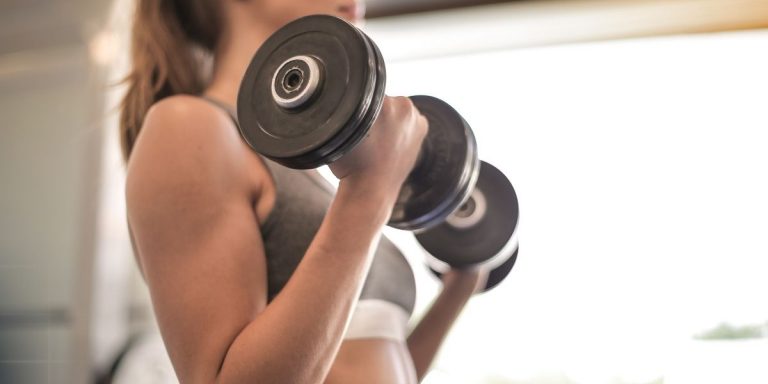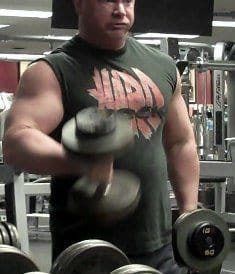Sumo Deadlift Workout Routine (For Those Who Aren’t Good At Deadlifts)
Some people are naturally strong at exercises like sumo deadlifts. For the rest of us, we have to work harder at them.
But one thing is for sure if you don’t have a plan and if you’re not consistent, then you will have a tough time making strength gains.
In this post, I’m going to give you a complete strategy to help you get stronger at deadlifts. This is especially great for those who are new or don’t feel comfortable doing this exercise.
Keep in mind that this post is geared towards sumo deadlifts but this method can work for conventional deadlifts as well (or any compound exercise that you want to get better at).
Below is my entire ‘Deadlift Day’ routine at a glance.
- Leg Extensions: 5 x 15
- Sumo Deadlifts: 4 x 10, 5, 2, 1
- Conventional Deadlifts: 1 x 15
- Standing Calve Raises: 5 x 15
As you can see, the workout is focused on deadlifts. However, you should consider integrating other exercises into your routine as well. I’ll explain why later. And I’ll explain why I chose the sumo-style deadlift.
**This is the exact workout I did on this particular just before writing this blog post and making the video that you’ll see below. I will sometimes do other exercises on my deadlift day, such as arms or more leg exercises.
Sumo Deadlift Workout Video
Here’s the video version of this post. You can get a better idea of the sumo deadlift form here.
Keep in mind that everyone is a bit different. My method is one that is comfortable to me, meaning that my muscles are doing the work and I do not feel pain in the wrong places.
You learn more details about this in the video after the workout, so be sure to listen to that as you’ll get some more great tips.
I also encourage you to focus on being your best rather than comparing yourself to others in the gym. It’s you against you!
Starting Out With Leg Extensions
There are two reasons why I do leg extensions before sumo deadlifts. I also apply this same strategy before doing conventional deadlifts and squats.
- Warm-up
- Pre-exhaust your quads
First, leg extensions will help get the blood flowing. Keep in mind you’re not going super heavy here. At least, not at first.
Secondly, pre-exhausting your quads will help you better focus on using your muscles to do more of the work. It also gives you that pump, which provides that mental edge you need for heavy sumo deadlifts.
I do five sets of 15 reps, and progressively move up in weight a little each set. Here’s how that looks:
- Set 1: 100 lbs
- Set 2: 130 lbs
- Set 3: 150 lbs
- Set 4: 170 lbs
- Set 5: 190 lbs
**Don’t pay too much attention to the weight I listed. As you know, every machine is different. In short, the first few sets should be light while that final set is more challenging to get 15 reps with.
Some powerlifters and strength trainers may speak against doing leg extensions before sumo deadlifts. That’s okay. If it doesn’t work for you, then try something else. I’m only sharing with you what works for me.
Also, this post is more from the perspective of a bodybuilder who wants to get stronger. If you’re solely into powerlifting, the strategy you use may be different.
If pure strength is your ultimate goal, then you may want to check out the powerlifting program called Critical Bench by Mike Westedal.
You can read more about that here: Critical Bench 2.0 Strength Training Program
Sumo Deadlift Form
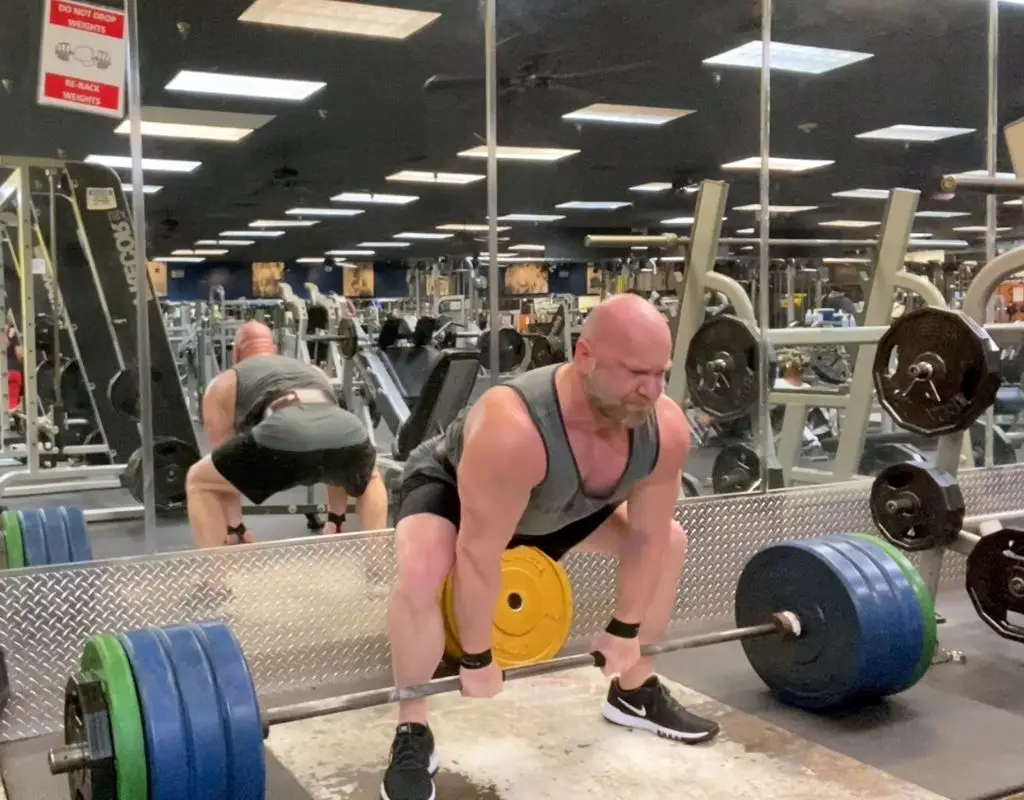
Sumo deadlifts (and all deadlifts) are one of the most powerful exercises you can do for both strength and mass. They also help you build a solid foundation for building more muscle in the future
That said, your sumo deadlift form is crucial. So I’m going to break this down in detail below.
Your Stance
The most important part of the sumo deadlift is your stance. And this is going to be slightly different for everyone. Remember, we all have different body structures and builds. ‘One size’ doesn’t necessarily fit all.
So I’m going to breakdown the basics and how to find the sumo deadlift stance that works best for you and your body type.
- Start by placing your feet a little wider than shoulder-width apart
- Point your feet outward
- Make sure your chins are close to the bar but not quite touching the bar
- Squat down and grab the bar but don’t pull the weight yet
- Your hands will typically be a little closer than shoulder-width
- Stay down there for a few seconds and assess your hand position, your stance, stability, and overall position
- Release your hands from the bar and return to the standing position
- Adjust your foot position accordingly before going back down
You should go through these steps a few times until you find a position that feels natural to you. Your stance and hand position may be slightly wider or not quite as wide.
The Lift (Sumo Style)
Once you have a stance that feels natural to you, it’s time to get into the lift. Here are some important notes:
- Get into your starting position and stance
- Bending your knees, squat down and grab the bar tightly in the position that feels most natural
- Keep a slight arch in your lower back (do not round your back, ever!)
- Poke your rear outward
- Pull that weight!
- As you’re pulling the weight up, push your quads outward; in other words, don’t let your knees come inward
- Press with your heels, not with the balls of your feet
- Keep your shoulders pulled back during the lift
- Don’t hyperextend your back too much when you get to the standing position; rather poke your chest out as you’re clinching shoulder blades
MUSCLE BUILDING TIP: If you want more muscle activation, control the weight by lowering it slowly as you go back down to the starting position. This doesn’t have to be a true ‘negative’ rep but make sure you are controlling the weight rather than letting the weight pull you back down.
You can learn more about negative training and other methods to make your muscles work harder in this post: 15 Ways to Build More Muscle Mass
Sumo Deadlift Routine
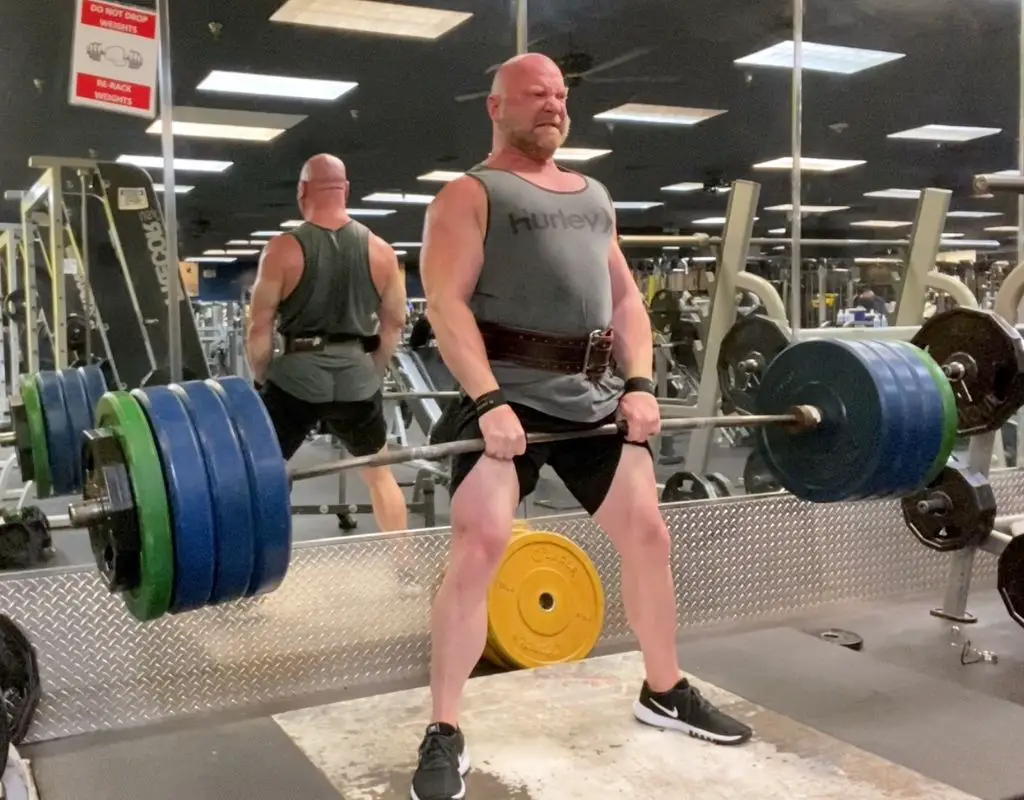
It’s time to get into your sumo deadlift workout routine. There are five working sets and I’ll go through each one in detail below.
**Rest 2-3 minutes between sets 1-3 and take a 5-minute rest between the final 2 sets.
***Get a good pre-workout meal in you about an hour or so before doing this workout, and also consider taking a strong pre-workout like PreFierce Pre-Workout.
Set 1: Light-Moderate Weight
Your 1st set will be 8-10 reps with a lighter weight that you could do 15 or more reps with.
Due to the nature of this exercise, I don’t consider any set to be a true warm-up set. Think about it. A ‘light’ set of deadlifts takes more effort than working sets of other exercises.
That said, start out with a weight that’s light enough to where you could crank out 15 or more reps with. For some, that may be 95 lbs (and bar and two quarters). For others, it may be 135 lbs (the bar and two plates). And some are comfortable starting with 225 or more.
But here’s the thing. You’re not going to go all-out on this first set. You’re only going to do about 8-10 reps with that weight.
This lighter set will help you nail down your form. And it gets you prepped for the heavier sets to come without getting fatigued.
Set 2: Moderate-Heavy Weight
Your 2nd will be 5-6 reps with a moderate-heavy weight that you could get at least 10 reps with.
You’re moving up to a decent load on this set of sumo deadlifts. Like the first set, you’re not going all-out. You’re saving it for that 4th set, which we’ll get too shortly.
This set really activates all of the muscles that are involved in the sumo deadlift. And it’s the next step of preparation for what’s to come without completely exhausting your body.
Set 3: Heavy Weight, Touch and Go
Your 3rd set will be 2-3 reps with a pretty weight. You can also do these few reps with the touch-and-go method.
Now you’re ready to pull some serious weight off the floor. At this point, you’ll want to lift what you think your max 2-3 rep max is.
You’ll also take a longer rest period after this set, up to five minutes. Take some time to take a few sips of water and regain your energy and focus.
**Touch-and-go is where you do not stop when you get back down to the starting position. You don’t necessarily want to bounce the weight off the floor, but it’s a fluid movement.
Set 4: Max Weight
Your final heavy set will be that 1-rep max.
You know what time it is. It’s time for you to pull your max weight.
Make sure you are 100% focused during every millisecond of this set. Don’t let anything distract you. You’ve got this!
Set 5: Light-Moderate Weight Touch and Go
You’ll end your deadlift routine with a high-rep set of 15 reps with a lighter weight. This will also be done with the conventional deadlift style. These are also touch-and-go.
So, you thought it was over after that 4th heavy set, right? Nope, you have one more set of deads to go.
This set is to build your endurance and explosive power. You can go back down to the weight you started with for this set.
Your form will more than likely not be perfect on these as you’ll be cranking these reps out. But don’t use completely poor form. And remember the crucial parts of the light, like not rounding your back.
I like to end my sumo deadlift routine with conventional deadlifts so that I don’t completely neglect the conventional style. You can end with a high-rep set of sumo deadlifts if you wish. Especially if you’re doing conventional deadlifts on another day.
Calves After Deadlifts
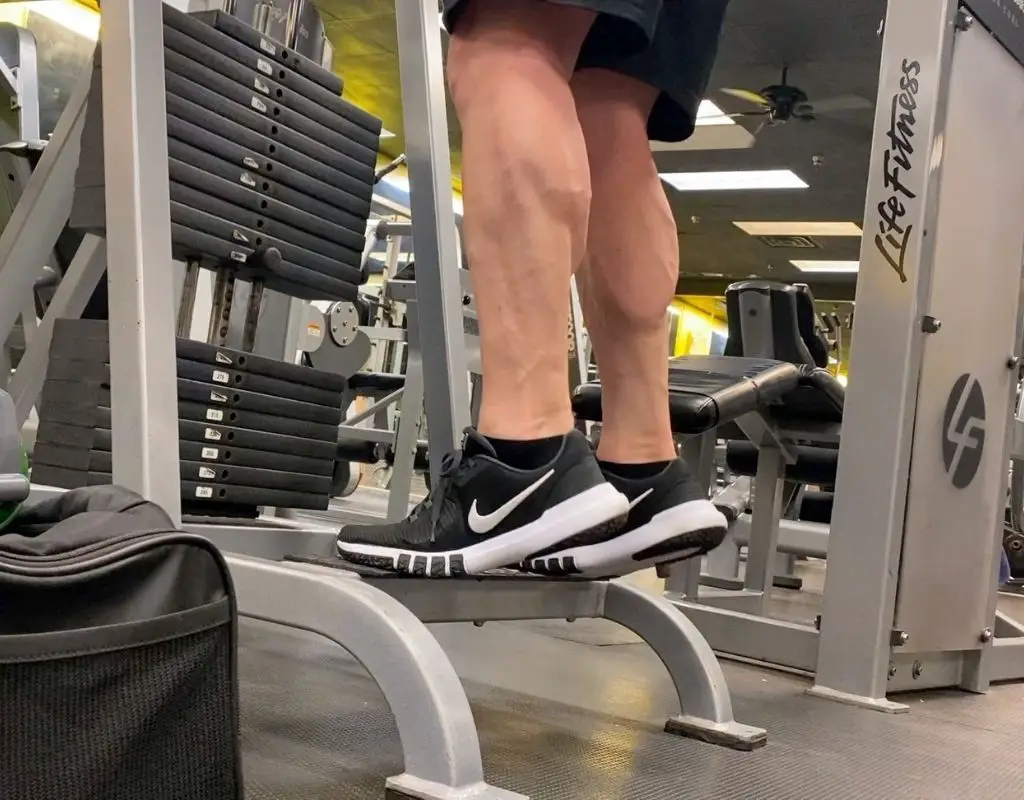
Since all types of deadlifts involve your calves, it’s a good idea to finish this type of workout by targeting your calves directly. And I have a special method that will make your calves grow into cows!
- You’re going to choose two exercises, and it really doesn’t matter which two.
- You’ll do a standard 5×15 for the first exercise.
- The following exercise will be one giant rest-pause set.
Here’s how it looks:
| Exercise | Sets x Reps |
|---|---|
| Standing Calve Raises | 5 x 15 |
| Seated Calve Raises | 75 reps* |
*Choose a weight that you can do 20 or more reps with. Do as many reps as you can do, rest for 10-15 seconds, and go again. Repeat this until you reach 75 total reps.
You can read more about rest-pause training here: How To Perform Rest-Pause Sets: Increase Intensity for New Muscle Gains
Comparing Sumo Deadlift Numbers
Lastly, I want to end with some encouraging thoughts for you. When it comes to exercises like sumo deadlifts, it’s easy to get discouraged when you see others in the gym deadlifting so much more than you.
Worrying about how much others can lift can potentially lead to two things:
- Injury, as you may try to pull a weight that you clearly have not worked up to yet.
- Sometimes this can make people give up and stop going to the gym.
You don’t want either of those to happen. So don’t let that bother you. Remember, we all start somewhere. And we all have different levels of strength.
Of course, there’s nothing wrong with some friendly competition. Just don’t let it get you down if someone is further along than you.
The best thing that you can do is simply focus on being your best every time you step in the gym (and out of the gym as well!). And we should all be encouraging one another in the gym.
There are so many unhealthy things that you and everyone in there could be doing. But instead, you’re all in there training hard and creating a better version of yourselves. So let that continue to fuel you and keep pushing!
I truly hope that this sumo deadlift routine helps you get stronger. And I also hope that you got even more out of this post.
Also, be sure to check out my programs, meal plans, and other merch in my online muscle shop.
Train with Passion,
Jason
